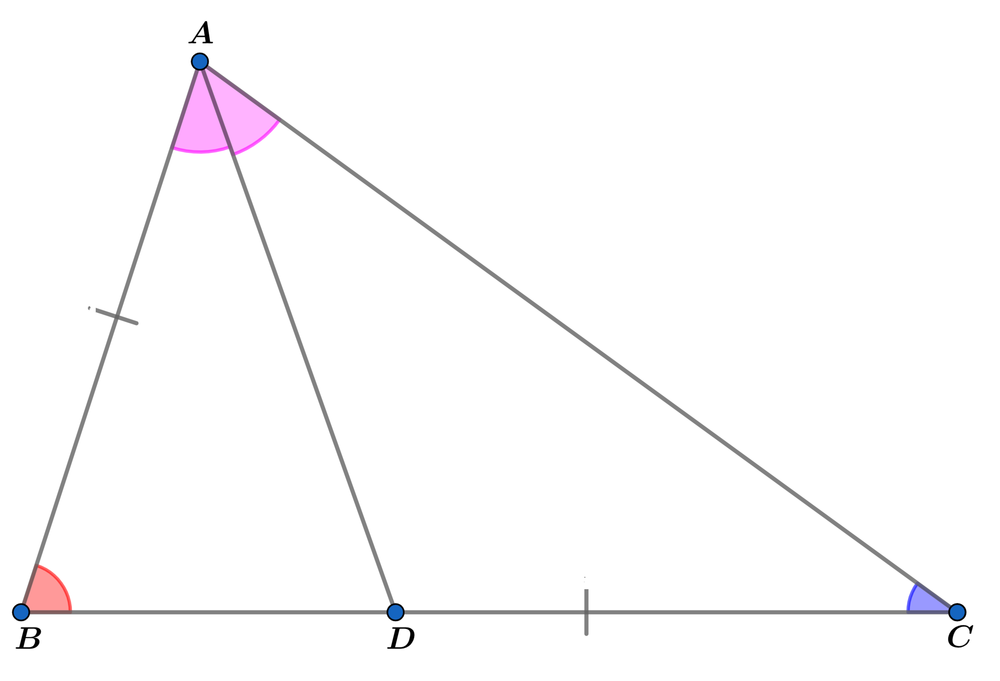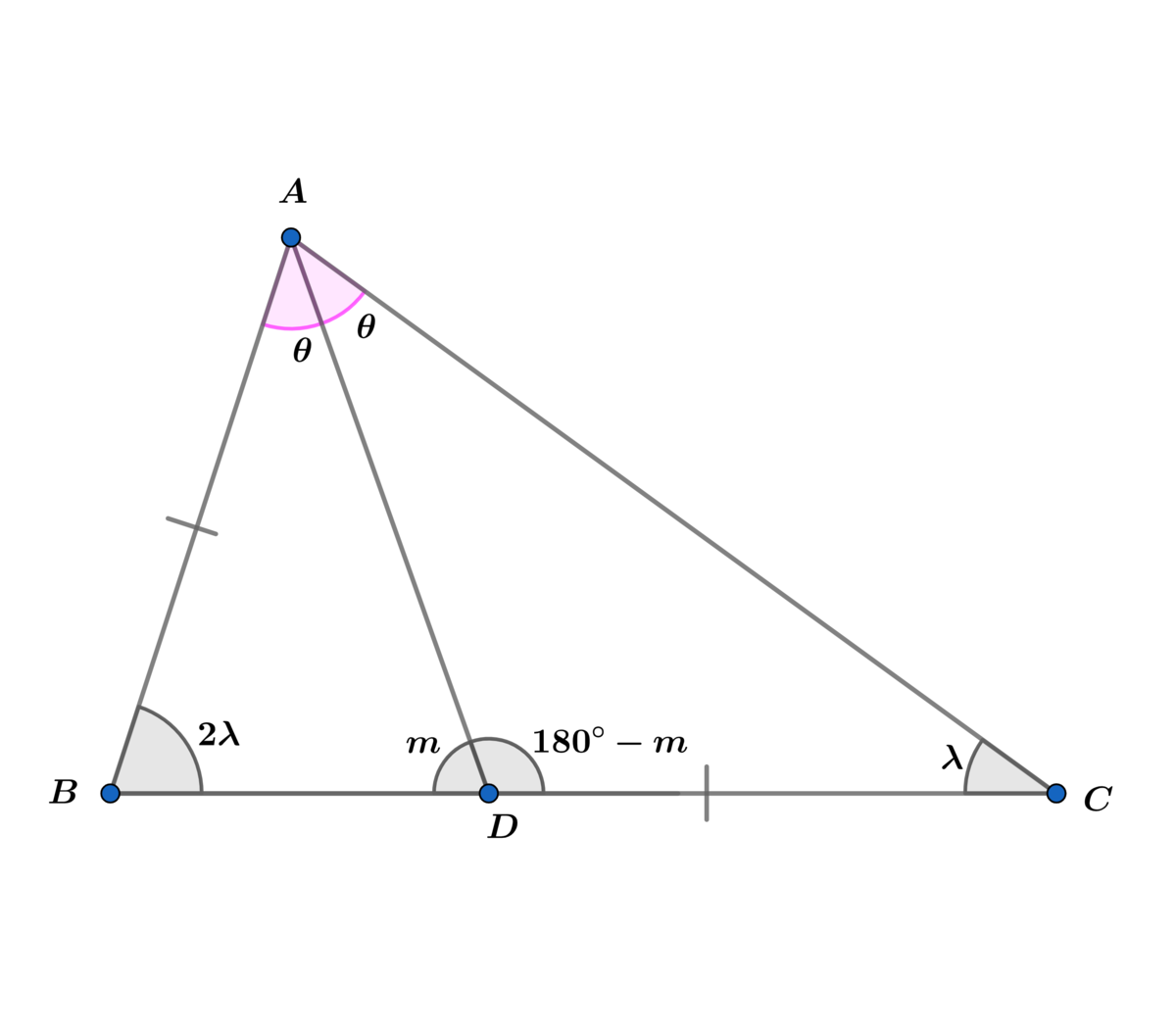A Golden Problem!

In △ A B C , ∠ B A D ≅ ∠ D A C , A B ≅ D C and m ∠ A B C = 2 ( m ∠ A C B ) .
If the area of △ A B C is A △ A B C , then ( B C ) 2 A △ A B C = b a ( ϕ − 1 ) , where ϕ denotes the golden ratio and a and b are coprime positive integers, find a + b .
The answer is 9.
This section requires Javascript.
You are seeing this because something didn't load right. We suggest you, (a) try
refreshing the page, (b) enabling javascript if it is disabled on your browser and,
finally, (c)
loading the
non-javascript version of this page
. We're sorry about the hassle.
2 solutions

θ + λ + 1 8 0 ∘ − m = 1 8 0 ∘ ⟹ m = θ + λ
Using law of sines of △ A D C and △ A B D ⟹
sin ( θ ) D C = sin ( λ ) A D
and
sin ( θ + λ ) A B = sin ( 2 λ ) A D
⟹ sin ( θ + λ ) A B sin ( 2 λ ) = sin ( θ ) D C sin ( λ )
⟹ sin ( 2 λ ) sin ( θ ) = sin ( λ ) sin ( θ + λ ) ⟹
2 cos ( λ ) sin ( θ ) = sin ( θ ) cos ( λ ) + cos ( θ ) sin ( λ )
⟹ cos ( θ ) sin ( λ ) − cos ( λ ) sin ( θ ) = 0 ⟹ sin ( λ − θ ) = 0 ⟹ θ = λ
⟹ 1 8 0 ∘ = 3 λ + 2 θ = 5 λ ⟹ λ = 3 6 ∘ = θ ⟹ 2 θ = 2 λ = 7 2 ∘

h = A C sin ( 3 6 ∘ ) = B C sin ( 3 6 ∘ ) ⟹
A △ A B C = 2 1 ( B C ) 2 sin ( 3 6 ∘ ) ⟹ ( B C ) 2 A △ A B C = 2 1 4 1 0 − 2 5 =
= 8 2 ( 5 − 5 ) = 8 4 5 ( 2 5 − 1 ) = 4 5 ( ϕ − 1 ) =
b a ( ϕ − 1 ) ⟹ a + b = 9 .
Let A B = D C = 1 and A C = x . By angle bisector theorem ,
A B B D = A C D C ⟹ 1 B D = x 1 ⟹ B C = 1 + B D = 1 + x 1
By sine rule ,
sin C sin B sin C sin ( 2 C ) 2 sin C cos C ⟹ cos C = A B A C = x = x = x sin C = 2 x
By cosine rule ,
A C 2 + B C 2 − 2 ⋅ A C ⋅ B C ⋅ cos C x 2 + ( 1 + x 1 ) 2 − 2 x ( 1 + x 1 ) ⋅ 2 x x 2 + 1 + x 2 + x 2 1 − x 2 − x x 2 + x 2 1 − x x 3 ⟹ x = A B 2 = 1 = 1 = 0 = 2 x + 1 = φ where φ = 2 1 + 5 denotes the golden ratio,
Then cos C = 2 φ ⟹ C = 3 6 ∘ . And the area of △ A B C is given by:
A △ B C 2 A △ = 2 1 ⋅ A C ⋅ B C ⋅ sin C = 2 φ ( 1 + φ 1 ) 1 − 4 φ 2 = 2 φ φ + 1 1 − 4 φ 2 = 4 φ 2 φ 2 4 − φ 2 = 4 1 4 − 2 3 + 5 = 4 1 2 5 − 5 = 4 1 5 ( 2 5 − 1 ) = 4 1 5 ( 2 5 + 1 − 1 ) = 4 5 ( φ − 1 )
Therefore a + b = 5 + 4 = 9 .